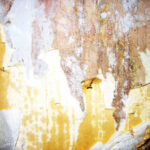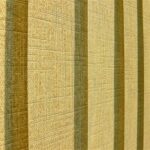You’ve been living in your new home for some time now, and you just can’t take it anymore. That old, oddly colored wallpaper is just too much to look at, and has brought out cringing from every visitor to your home. You want it gone, and you want to repaint, but where to start? One of the major worries is how to remove wallpaper without damaging the wall beneath. If proper technique isn’t used, the drywall or sheetrock underneath can be torn and/or scored. This can be repaired but adds time and money to your project. Careful removal is necessary to ensure a quick and easy transition from old wallpaper to beautiful to paint.
Removing wallpaper takes a lot of patience, and how it was installed will decide how easily it comes off. Some wallpapers can come off dry, especially if the wall was primed well and the correct amount of glue was used. Time ages the glue and makes it easy to remove. In some cases, if the wall wasn’t properly primed, the removal can cause damage to the texture.
A popular method to removing wallpaper use to be steamers, which at one point were propane powered. Most are electric now. The problem with steamers is that there is a good possibility that you can scald yourself, and they generate a lot of moisture. My prefferred method is to use a powdered solvent that is dissolved in warm water. When applied, the solvent breaks down the adhesive used to hang the paper. Before you start, you’ll want to have the proper tools.
2 Large buckets of some sort. One of warm water with solvent mixed in, another with clean tap water for cleanup.
Large sponges
2 3″-6″ broad knives, like putty knives
A ladder
Rubber Gloves
Drop Cloths
Scoring tool
Start to prep your room by removing all the outlet covers. Next, lay down your drop cloths to protect your floor. Remove any nails, light fixtures on walls or picture moints that might hinder your progress. If removing light fixtures, make sure you turn off the electricity to the cirtcuit before handling electrical wires. I generally do this anyway because I’ll be working with water around the outlets.
Now mix your solvent in the warm to hot water. I always like to use DIF by zinsser. You can find it at most home-improvement stores. Start with a small test area near the seam of one of the panels and try to peel off the paper gently. Determine the grain of the glue. This will let you know which way you’ll need to work the paper out, and wil help you determine the strength of the adhesive.
Next, Take one of your large sponges and dip it into the bucket of solvent mix (wear your gloves). Leave the sponge full of solvent, it isnt necessary to wring it out. Rub the spunge over a large area of that panel, soaking the paper. Continue to do this over the entire panel. You may need to go over it with additional applications depending on the type of wallpaper used. Once finished, move on to the next panel to give the previous panel time to sit while the solvent does it’s job on the adhesive backing. If you notice that the water doesn’t seem to penetrate the paper, use the scoring tool to create small holes in the paper. This will help the solvent to reach the glue. Use this as a last resort, as applying too much pressure can leave divots in the sheetrock beneath.
After you’ve soaked two or three panels, go back to the first and begin removing the paper. It should peel off much more easily. If you’re lucky, most of the glue will be removed with the paper. In most cases, a lot of residue is left on the wall as pieces are removed. Take care with the scraping tool so as not to carve chunks out of the sheetrock.
Once the entire panel is clear of paper, move on to the next and repeat. I work on two to three panels at a time. I’ll then use a sponge with the solvent again and clean off any remaining glue residue, finally giving it a rinse with clean water. Leave the wall to dry and repeat the process until you’ve finished the room.
There’s always a possibility that youll find another layer of wallpaper underneath the one you remove. You cannot remove multiple layers at once, doing so risks to much damage to the wall. Do the room one layer at a time.
Once all the wallpaper is removed, give the walls a day or two to dry properly. This will give you plenty of time to go over your color choices, and let you get setup for the rest of your painting project.
In Part 2, I’ll discuss how to properly prep your walls and room to apply the first coat of primer.



